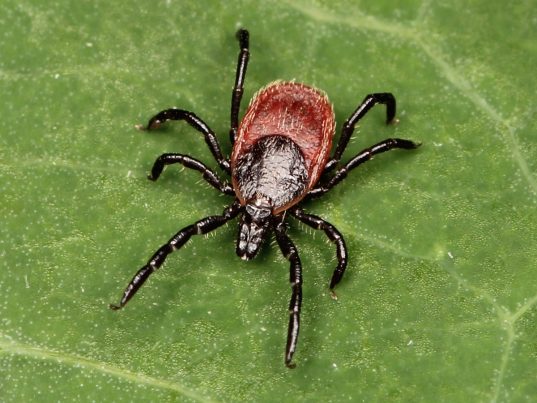Small and incredibly dangerous: Follow these tick safety tips to prevent infections
Wednesday, November 27, 2019 by Grace Olson
http://www.bugout.news/2019-11-27-tick-safety-tips-to-prevent-infections.html

Ticks are commonly found in animals, but they can attach to humans as well. They are well-known carriers of various diseases and infections, and it is best to ward them off once you spot them. This is especially the case during the summer when ticks are in full swing. To prevent a tick from latching onto you, continue reading below. (h/t to Survivopedia.com)
How are ticks dangerous?
Unlike mosquitoes who attach themselves on human beings for a few seconds or minutes, ticks latch onto humans by embedding their heads into the skin to draw out blood. They prefer warm and cozy areas, such as the armpits, the groin areas, and behind the ears. If unnoticed, they can stay there for days. This causes inflammation in the surrounding tissues, inducing itchiness and redness.
Ticks cause more than inflamed tissues and itchiness, however. They are also known for spreading potentially infectious diseases, including neurological problems and possibly death. Moreover, ticks latch unto different kinds of animals, giving and taking different types of bacteria along with them. This means that ticks are capable of carrying more than one disease.
Listed below are some of the conditions brought about by ticks:
- Lyme disease causes joint pain, brain tissue inflammation, and complications in the nervous system.
- Rocky Mountain spotted fever can potentially lead to heart, kidney, and lung failure.
- Anaplasmosis may disrupt the blood’s clotting process, potentially causing organ failure.
- Babesiosis symptoms include the development of blood clots, organ failure, and unstable blood pressure.
Transmission rates vary among ticks, but it takes a while before the disease develops. It usually takes 36 to 48 hours before the symptoms show. If you find a tick attached to you before then, place the tick in a zip lock bag. Have your doctor examine it immediately to find out if it carried any detrimental bacteria.
Keeping safe against ticks
According to the Centers for Disease Control and Prevention (CDC), there were nearly 60,000 tick-borne disease cases in 2017, and the numbers continue to rise. Not all ticks are carriers of infectious diseases, but it is best to prevent a tick from latching onto you. Here are some tick safety measures that you can take:
1. Familiarize yourself with your area.
The first thing to do is to find out what kind of ticks are reside in your area. Different kinds of ticks are found more in certain areas than others. For example, the black-legged tick (deer tick) is more infamous in the Northeast and parts of the Midwest. This also applies to the kind of area. You are more likely to find ticks in the forests and woods than the urban streets.
2. Wear appropriate clothing.
When going for a hike, cover yourself. Wear long pants, a shirt, arm sleeves, and closed shoes. Tuck in your shirt into your pants to ensure that a tick does not sneak its way in.
3. Use natural tick repellents.
Some people recommend using DEET as tick repellents, but it contains hazardous compounds that can be detrimental for your health. Essential oils, like lemon eucalyptus and geranium oil, are great natural alternatives. Simply mix these two, pour them into a spray bottle, and apply them to your skin. For your clothes, dilute the essential oil in water first before pouring it into a spray bottle. Apply the mixture to the cuffs and edges of your clothes when you are out to prevent ticks from sneaking in. (Related: Repel ticks with this natural oil.)
4. Take a shower within one to two hours after going out.
Taking a shower after getting home forces you to remove your clothes, which can potentially have a tick or two. This also allows you to examine your body for any unwanted ticks and other itchiness or redness. If you find an unattached tick, simply wash it off.
5. Use tweezers when removing a tick.
If you do find a tick that has attached itself to you, remove it using tweezers. Grasp the tick by the head, where it is closest to the skin. Pull upward carefully. The tick is already dead, so you can simply dispose of it. You can opt to save it for identification later on.
6. If you have a pet, make sure to have it regularly checked.
Ticks are common among dogs. Give your dog a bath once a week, and have it checked once a month or two for the presence of ticks. You can also use natural repellents (like apple cider vinegar mixed with water) and spray them on your dog’s fur.
With the proper knowledge and application, you can be ready for any kind of danger – even if it something as small as a tick. Learn other prevention tips and tricks outdoors at Preparedness.news.
Sources include:
Tagged Under: Tags: bug out, camping, deer ticks, dog ticks, hiking, how-to, infections, Lyme disease, off grid, outdoors, pet health, preparedness, prepping, prevention, Rocky Mountain spotted fever, survival, tick repellent

